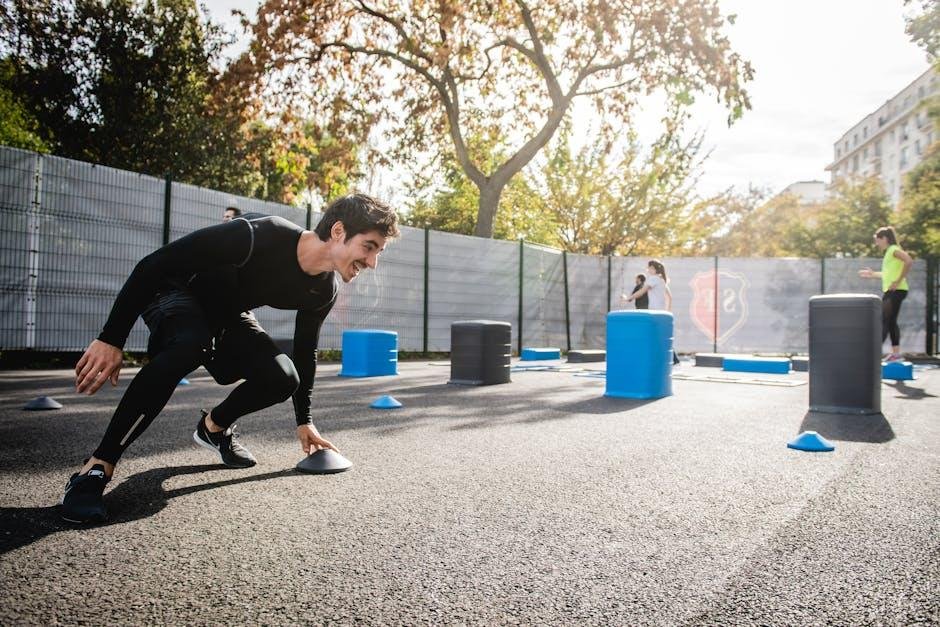Unlocking Your potential: How to Set SMART fitness Goals
In a world filled with ever-evolving fitness trends and fleeting motivations, finding a path to sustainable health can often feel overwhelming. The dream of achieving a stronger, fitter, and healthier self is one many share, yet the journey can quickly become muddied by ambiguity and uncertainty. Enter the SMART framework—a powerful tool designed to transform your aspirations into tangible achievements. SMART, which stands for Specific, Measurable, Achievable, Relevant, and Time-bound, provides a practical roadmap for those looking to carve out a more defined and purposeful fitness journey. Whether you’re a seasoned athlete or just beginning your health voyage, understanding how to set SMART fitness goals can not only enhance your commitment but also significantly increase your chances of success.Join us as we delve into the intricacies of each component, guiding you toward a more effective and fulfilling approach to fitness that resonates with your unique aspirations.
Understanding the SMART Framework for Effective Goal Setting
The SMART framework is a powerful tool that can transform the way you approach goal setting, particularly in the realm of fitness. By focusing on Specific objectives, you eliminate ambiguity and set clear intentions. For example, instead of stating a general goal like, “I want to get fit,” you might specify, “I want to run 5 kilometers without stopping.” this specificity helps you visualize the end goal and can enhance your motivation. Additionally,setting measurable targets allows you to track your progress,making it easier to stay accountable. To make your fitness goals more measurable, consider metrics like weight loss, the number of workouts per week, or time spent on cardiovascular activities.
Beyond being specific and measurable, your goals should be Achievable, ensuring they are realistic based on your current fitness level. This means considering your time constraints and physical capabilities. such as, if you are new to running, starting with a goal of running a marathon may not be achievable initially. Moreover, your goals should be Relevant to your overall wellness journey, aligning with your personal fitness aspirations. Lastly, establishing a Time-bound framework is crucial; instead of saying you will achieve the goal “someday,” setting a deadline like ”in three months” creates that sense of urgency and purpose. A structured plan with these criteria can lead to effective and lasting changes in your fitness journey.

Identifying Your Fitness Objectives with Precision
Defining your fitness objectives requires clarity and introspection. To achieve this, consider breaking down your larger aspirations into specific categories that align with your overall lifestyle. Start by identifying what you want to achieve—be it weight loss, muscle gain, improved endurance, or mastering a new skill.Reflect on the following questions:
- What are my top fitness priorities?
- What barriers have prevented me from reaching these goals in the past?
- How can I measure my progress effectively?
Once you have clarity on your priorities, it’s essential to set measurable outcomes. Utilizing the SMART criteria can significantly enhance your goal-setting process.Each goal should be:
| SMART Element | Definition |
|---|---|
| Specific | Clearly define what you want to achieve. |
| Measurable | Ensure the goal can be quantified. |
| Achievable | The goal should be realistic and attainable. |
| Relevant | Align with your broader life goals. |
| Time-bound | Set a deadline for achieving the goal. |
By adhering to these principles, you ensure a structured approach to your fitness journey, enhancing accountability and motivation as you push towards your objectives.

Crafting Measurable Milestones to Track Your Progress
Creating measurable milestones is essential for tracking your fitness journey and ensuring that you stay motivated and accountable. Start by breaking down your larger fitness goals into smaller, achievable targets. For example, if your goal is to run a marathon, consider setting milestones such as:
- Completing a 5K by Month 3
- Running a 10K by Month 6
- Hitting Half-Marathon Distance by Month 9
These smaller targets not only help in tracking your progress but also provide a sense of accomplishment as you meet each one. In addition, consider incorporating a simple table for regular check-ins to evaluate your progress against each milestone:
| Milestone | Target Date | Actual Completion |
|---|---|---|
| 5K | Month 3 | ____ |
| 10K | Month 6 | ____ |
| Half-Marathon | Month 9 | ____ |
Remember, it’s important to reassess these milestones periodically and adjust them based on your progress and changing circumstances. Celebrate your achievements, no matter how small, and use them as fuel to push towards your next goal. By establishing measurable milestones, you’ll cultivate a clearer understanding of your fitness journey and maintain a strong sense of purpose throughout.

Staying Accountable and motivated on Your Fitness Journey
Staying committed to your fitness journey can sometimes feel like a daunting task, especially when motivation seems to dwindle. One effective way to maintain that drive is by creating a supportive surroundings. Consider sharing your goals with friends and family to foster a sense of accountability. You can also join fitness communities—both online and offline—were you can celebrate achievements and share challenges. Setting up regular check-ins with an accountability partner can provide that extra push; just knowing someone is rooting for you can make all the difference.
Another crucial aspect is to track your progress in a tangible way. Keeping a fitness journal or using apps can visually highlight your improvements. Consider these approaches to enhance your motivation:
- Visual Reminders: Post motivational quotes or images where you can see them regularly.
- Reward Systems: Treat yourself to non-food-related rewards after reaching milestones.
- SMART adjustments: Regularly revisit and adjust your goals to keep them relevant and challenging.
In Retrospect
As we draw the curtains on our exploration of SMART fitness goals, it’s clear that setting your sights on tangible, measurable objectives can transform your fitness journey from vague aspirations into achievable milestones. Whether you’re aiming to lift heavier, run that extra mile, or simply embrace a healthier lifestyle, the SMART framework serves as your personal map—guiding you through the peaks and valleys of your progress.
Remember, the essence of setting these goals is not solely in their attainment, but in the growth and resilience you cultivate along the way. Embrace the challenges that arise, celebrate your victories, both big and small, and don’t forget to recalibrate your goals as you evolve. After all, fitness is not merely a destination; it’s a lifelong adventure.So, take a moment to reflect on what you’ve learned and commit to crafting your own SMART goals. The journey begins with a single step—make yours count!
